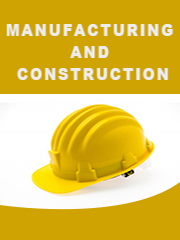Report overview
Steam Methane Reforming, or SMR, processes feedstocks, ranging from natural gas to light naphtha, mixed with steam to produce a hydrogen rich syngas effluent, with a typical H2/CO ratio of 3:1 to 5:1. SMR based plants are most commonly used to produce a hydrogen product or a combination of a hydrogen stream and another syngas product. In an SMR based plant, a heated mixture of the hydrocarbon feedstock and steam flows through catalyst filled tubes within a fired furnace called a reformer. The report covers large and medium SMR with hydrogen production capacity ranging ranging more than 1000 Nm3 /hr.
This report aims to provide a comprehensive presentation of the global market for Steam Methane Reforming, with both quantitative and qualitative analysis, to help readers develop business/growth strategies, assess the market competitive situation, analyze their position in the current marketplace, and make informed business decisions regarding Steam Methane Reforming. This report contains market size and forecasts of Steam Methane Reforming in global, including the following market information:
Global Steam Methane Reforming Market Revenue, 2018-2023, 2024-2029, ($ millions)
Global Steam Methane Reforming Market Sales, 2018-2023, 2024-2029, (K Units)
Global top five Steam Methane Reforming companies in 2022 (%)
The global Steam Methane Reforming market was valued at US$ 68 million in 2022 and is projected to reach US$ 99.8 million by 2029, at a CAGR of 5.6% during the forecast period. The influence of COVID-19 and the Russia-Ukraine War were considered while estimating market sizes.
Europe is the largest STEAM METHANE REFORMING market with about 33% market share. Asia-Pacific is follower, accounting for about 17% market share.The key manufacturers are Honeywell UOP, Air Liquide, Linde, Amec Foster Wheeler, Air Products and Chemicals, Caloric Anlagenbau GmbH, KBR, Heurtey Petrochem, McDermott, Haldor Topsoe, thyssenkrupp, Toyo Engineering Corporation etc. Top 3 companies occupied about 32% market share.
We surveyed the Steam Methane Reforming manufacturers, suppliers, distributors and industry experts on this industry, involving the sales, revenue, demand, price change, product type, recent development and plan, industry trends, drivers, challenges, obstacles, and potential risks.
Total Market by Segment:
Global Steam Methane Reforming Market, by Type, 2018-2023, 2024-2029 ($ Millions) & (K Units)
Global Steam Methane Reforming Market Segment Percentages, by Type, 2022 (%)
Steam Methane Reforming with PSA
Steam Methane Reforming with Amine Absorption
Global Steam Methane Reforming Market, by Application, 2018-2023, 2024-2029 ($ Millions) & (K Units)
Global Steam Methane Reforming Market Segment Percentages, by Application, 2022 (%)
Refinery
Chemical Industry
Others
Global Steam Methane Reforming Market, By Region and Country, 2018-2023, 2024-2029 ($ Millions) & (K Units)
Global Steam Methane Reforming Market Segment Percentages, By Region and Country, 2022 (%)
North America
US
Canada
Mexico
Europe
Germany
France
U.K.
Italy
Russia
Nordic Countries
Benelux
Rest of Europe
Asia
China
Japan
South Korea
Southeast Asia
India
Rest of Asia
South America
Brazil
Argentina
Rest of South America
Middle East & Africa
Turkey
Israel
Saudi Arabia
UAE
Rest of Middle East & Africa
Competitor Analysis
The report also provides analysis of leading market participants including:
Key companies Steam Methane Reforming revenues in global market, 2018-2023 (Estimated), ($ millions)
Key companies Steam Methane Reforming revenues share in global market, 2022 (%)
Key companies Steam Methane Reforming sales in global market, 2018-2023 (Estimated), (K Units)
Key companies Steam Methane Reforming sales share in global market, 2022 (%)
Further, the report presents profiles of competitors in the market, key players include:
Honeywell UOP
Air Liquide
Linde
Amec Foster Wheeler
Air Products and Chemicals
Caloric Anlagenbau GmbH
KBR
Heurtey Petrochem
McDermott
Haldor Topsoe
thyssenkrupp
Toyo Engineering Corporation
Outline of Major Chapters:
Chapter 1: Introduces the definition of Steam Methane Reforming, market overview.
Chapter 2: Global Steam Methane Reforming market size in revenue and volume.
Chapter 3: Detailed analysis of Steam Methane Reforming manufacturers competitive landscape, price, sales and revenue market share, latest development plan, merger, and acquisition information, etc.
Chapter 4: Provides the analysis of various market segments by type, covering the market size and development potential of each market segment, to help readers find the blue ocean market in different market segments.
Chapter 5: Provides the analysis of various market segments by application, covering the market size and development potential of each market segment, to help readers find the blue ocean market in different downstream markets.
Chapter 6: Sales of Steam Methane Reforming in regional level and country level. It provides a quantitative analysis of the market size and development potential of each region and its main countries and introduces the market development, future development prospects, market space of each country in the world.
Chapter 7: Provides profiles of key players, introducing the basic situation of the main companies in the market in detail, including product sales, revenue, price, gross margin, product introduction, recent development, etc.
Chapter 8: Global Steam Methane Reforming capacity by region & country.
Chapter 9: Introduces the market dynamics, latest developments of the market, the driving factors and restrictive factors of the market, the challenges and risks faced by manufacturers in the industry, and the analysis of relevant policies in the industry.
Chapter 10: Analysis of industrial chain, including the upstream and downstream of the industry.
Chapter 11: The main points and conclusions of the report.
